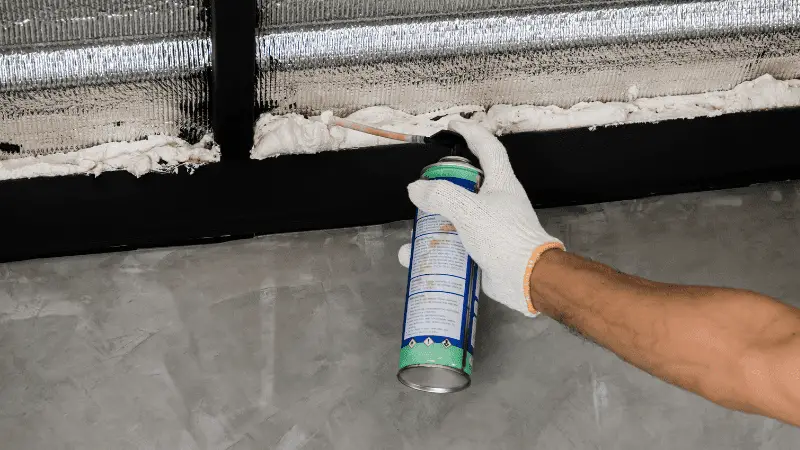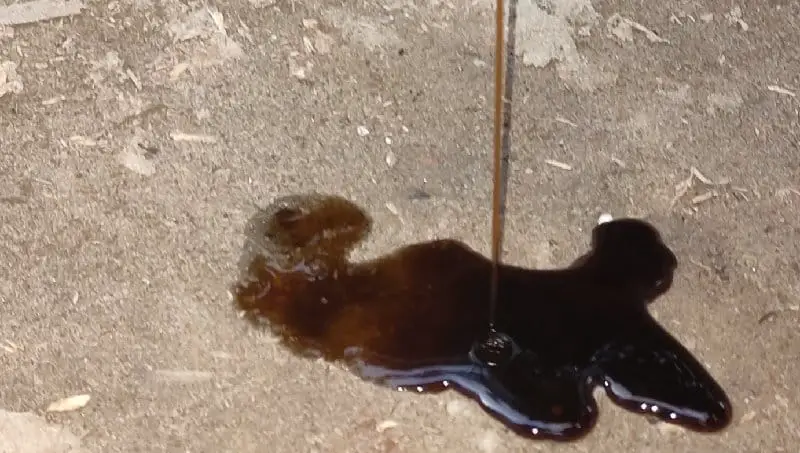Flex seal is a product used for bonding different materials together. A powerful adhesive. The commercial states that it can stop water from flowing out of a bucket. And saying that nothing can penetrate through the flex seal. So, can I use flex seal as engine oil?
This product comes with warnings on how to use it. Besides this, we don’t consider it safe to pour into the engine. However, we will talk about this in this article. After much research, we learned some essential things from experts, and here’s what we know from them.

Can I Use Flex Seal As Engine Oil?
You can use Flex Seal for tiny repairs on your vehicle, protecting its exterior trim and sealing window and door jambs. In addition, it also adds an extra protection layer to different parts that are constantly exposed to extreme environmental conditions.
Nevertheless, please refrain from using it to fix your car’s exhaust leak. The reason is that these seals are constantly subjected to high pressure and heat. Nonetheless, what is precisely risky about using flex seals as engine oil? Let’s talk about it.
Flex seals can’t replace a leaking car’s engine oil. Indeed, it can destroy your poor vehicle and do more harm than good. The flex seal literally ruins your car because it’s too thick. After pouring it, it’s necessary to drain this flex seal from the vehicle. But it might take some time to empty it fully.

Sealing Motor Oil Leaks From The Outside!
Sealing motor oil leak from outside! Is it possible? Actually, yes. You can stop this oil leak by adding an oil leak sealant or additive to the liquid system. Here we have discussed three oil sealer additives to help you fix oil leaks permanently without removing any vehicle parts. Let’s know more about this topic below:
Can You Seal An Oil Leak From the Outside?
Accordingly, it depends on how big the leak is. If there is a small crack on the seal, you can solve it from the outside. In other words, you don’t need to take apart any part of your car to reseal the leak.
Just pour a bottle of sealer or a stop leak additive into the transmission or engine. When you run sealer on the machine, it can revitalize the seals in the oil seals.
In short, the liquid sealer can condition and soften the rubber sealer to prevent further leaks. Mainly, the sealer failed to fix the big hole. In this case, you need to replace the leaky seal.
Sealing Motor Oil Leaks From The Outside (3 Common Sealers)
This chapter will cover three oil sealers to help you fix oil leaks without replacing your car.
1. AT-205 Re-Seal
In a disadvantageous place, if you have an oil seal leak, you can use the AT-205 Re-Seal. Though this sealer looks like water, it’s a polymer oil. With every fluid, you can mix it.
If you want, you can fix all types of oil seals with it. For instance, if your car’s automatic transmission has a leaking front main seal, this sealer will fix it. You don’t have to spend hours turning off transmissions.
2. Blue Devil Stop Engine Oil Leak
Blue Devil Oil Leak Sealant also works very well. It’s compatible with both diesel and gasoline engines. Add this additive solution to your vehicle’s engine or transmission. Additionally, it takes less than two days to close a leak permanently. And the best part is – this additive does not harm your car.
3. Permatex Sealant Spray Oil Leak
This spray sealant also works for oil leaks. We leaked the block and the oil pan. So, take this oil pan leak sealer and spray 3-4 coats on its affected area every 1-3 seconds.
Make sure to clean the affected area before you apply it. Then, leave it for 45 minutes to set the sealant. After that, start the engine and check for oil dripping under your car. We hope you don’t get any oil drops because we didn’t get any.
Can I Use WD 40 As Engine Oil?
Not; WD40 hasn’t the ability to lubricate an engine. Likewise, we are sure it will break down from the heat and burn. Even so, it destroys all the seals that catch your oil inside your engine. We don’t recommend it as an engine oil substitute.
But you can use engine oil as a substitute for WD40. WD40 is a lubricating oil with about 70% kerosene and 30% light body. So, using something other than a WD40 on an engine is a good idea.
FAQ (Frequently Asked Questions)
Q. Is flex seal oil resistant?
Flex Seal is not resistant to corrosive combustibles such as gas or oil. Thus, experts said not to try to use Flex Seal fluid on a gas tank. Be aware of the fact that it can’t burn or leak immediately.
Q. Does flex seal work on car engines?
You can spray Flex Seal on your vehicle’s undercarriage, truck bed, and wheel wells. You can use it as a protective interruption against rocks, rust, and debris. You can use it in your toolbox to waterproof it.
Q. How to clean used motor oil for fuel?
Reusing your used motor oil for diesel is an effective way to save money and the environment. Using diesel in the engine is an excellent idea. Used motor oil can produce quality power if processed, stored, and stirred with care.
To clean motor oil used for fuel plants. Process of cleaning used motor oil for fuel:
1. Pump waste oil to the distillation furnace with an oil pump.
2. Heat the furnace; the liquid oil will gradually turn into oil gas. The oil gas will pass through the catalytic chamber and the condenser. Then the diesel will cool by controlling the temperature above 150°C first.
3. If the temperature is below 150°C, the gasoline will be cooled. The rest of the system is similar to the pyrolysis system.
Final Word
Flex seal performs great on many surfaces like glass, plastic, fiberglass, metal, and aluminum. Since these elements are often used in cars, you can use Flex Seal as engine oil for repairs.
Ultimately, here we have covered the topic of flex seal for you. We hope you get the solutions to your problems from here. We also hope you know whether I can use flex seal as engine oil.
RELATED
